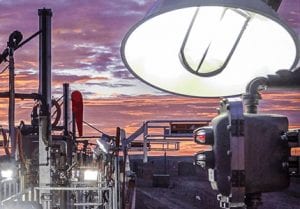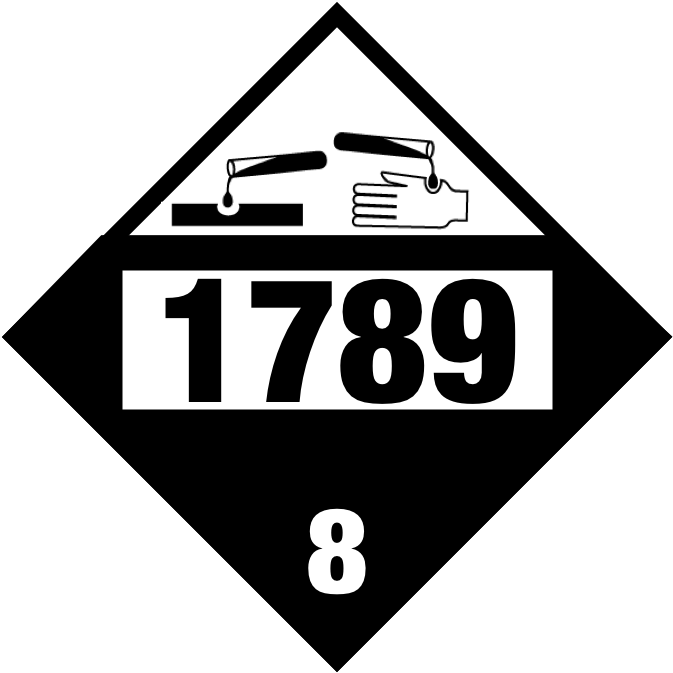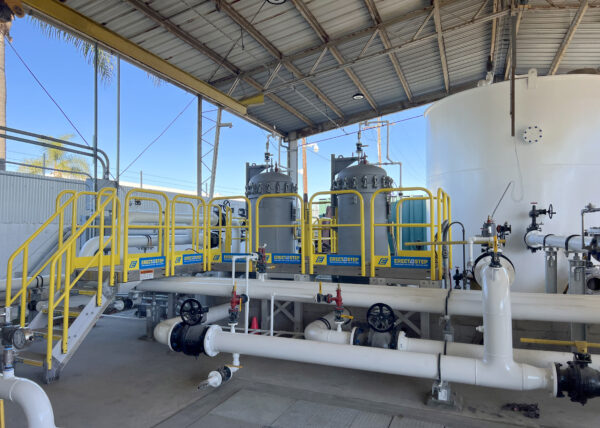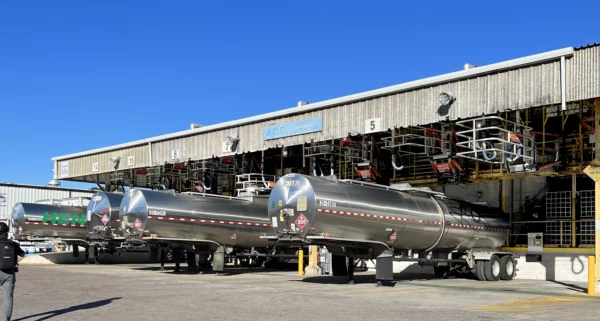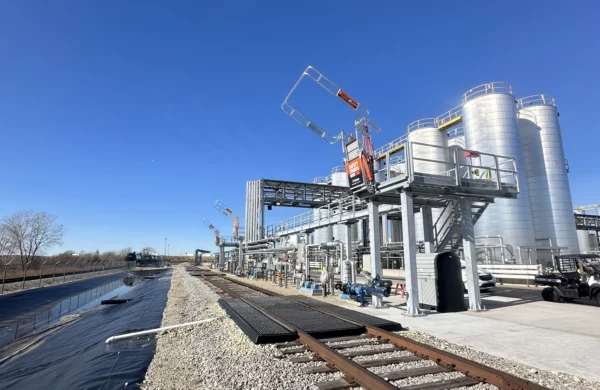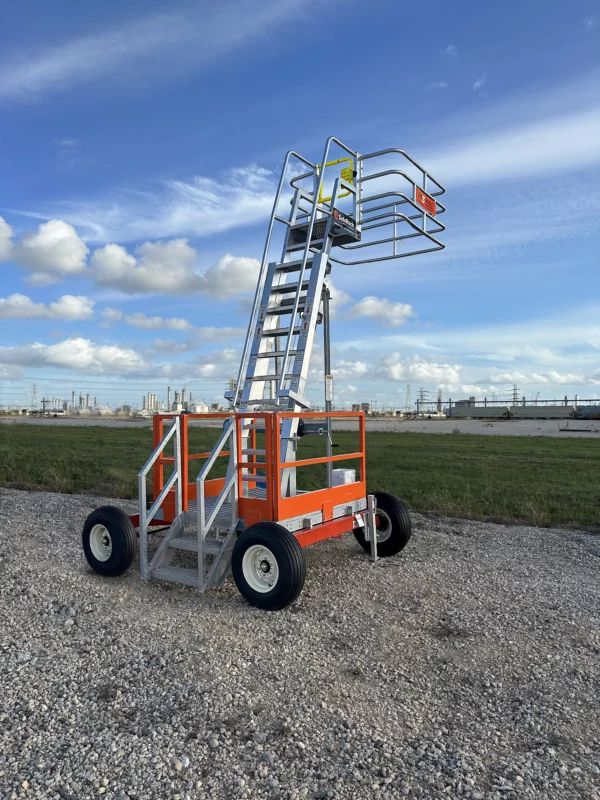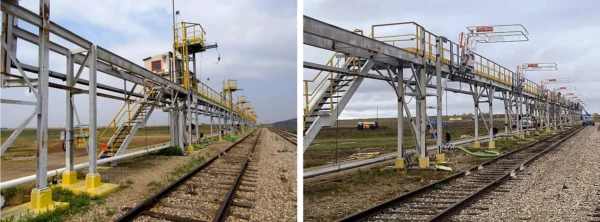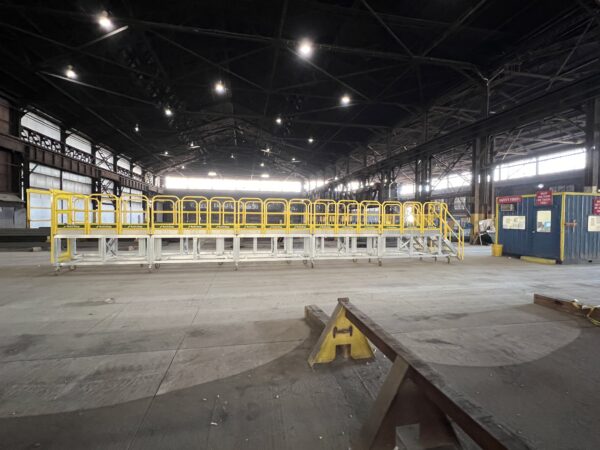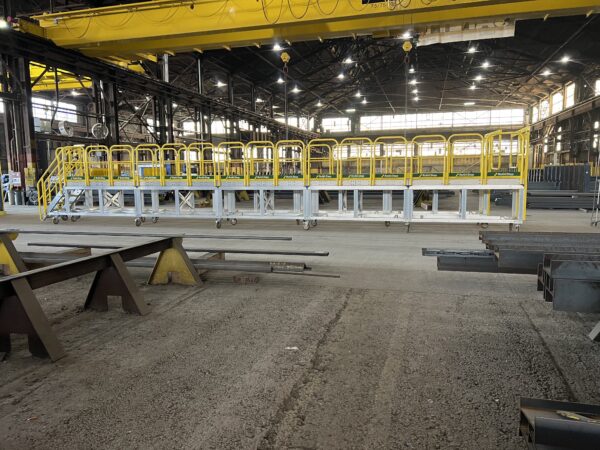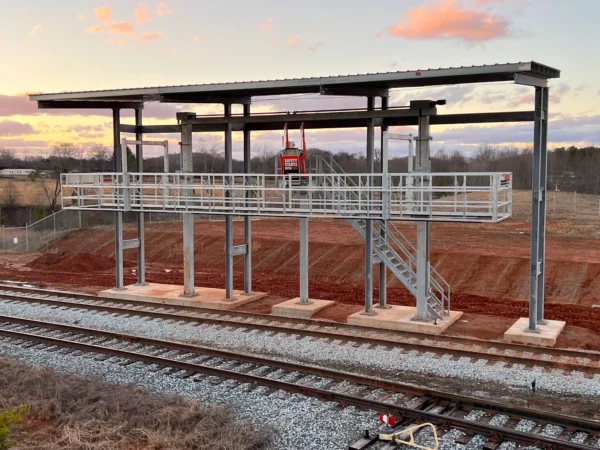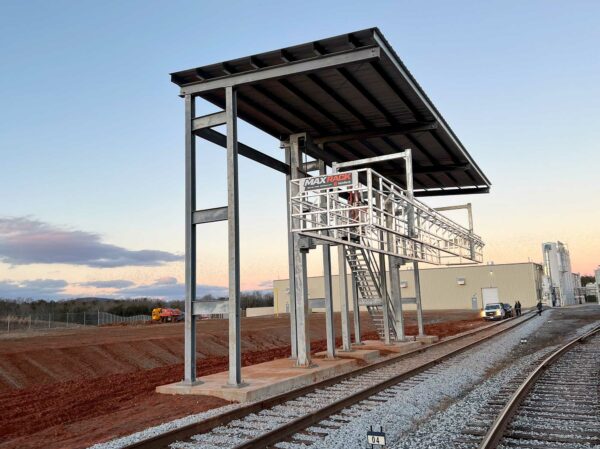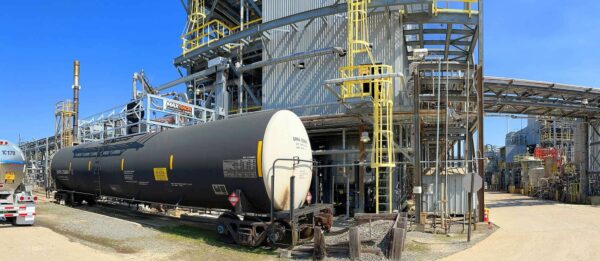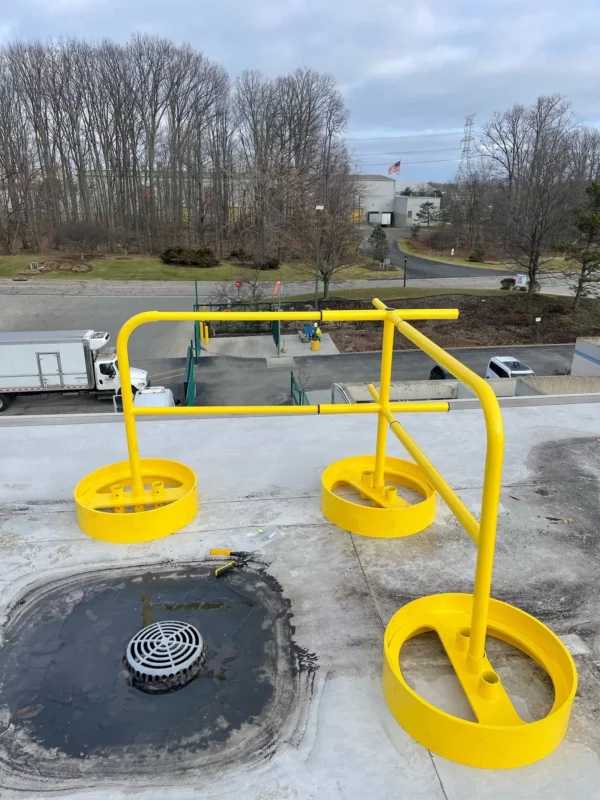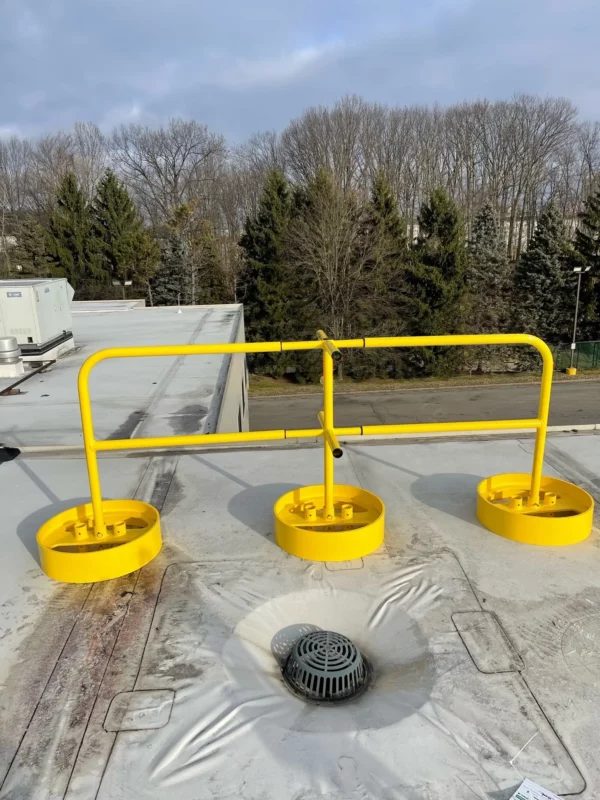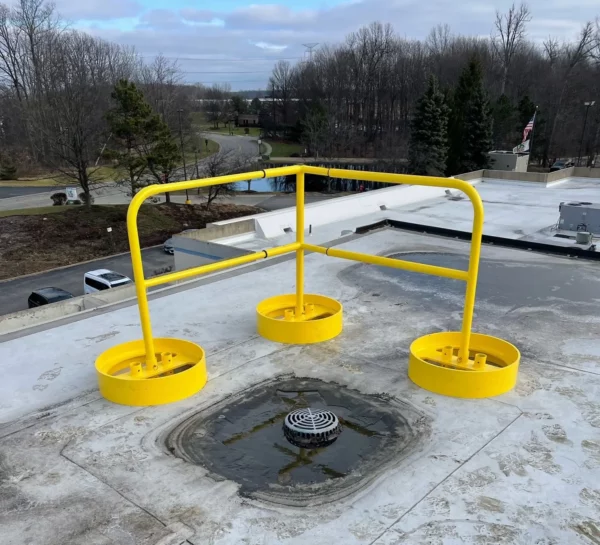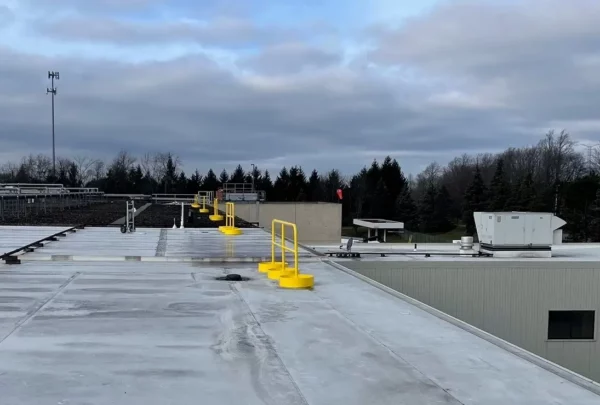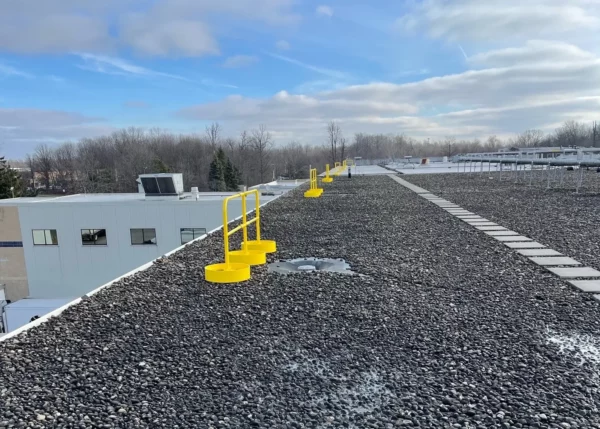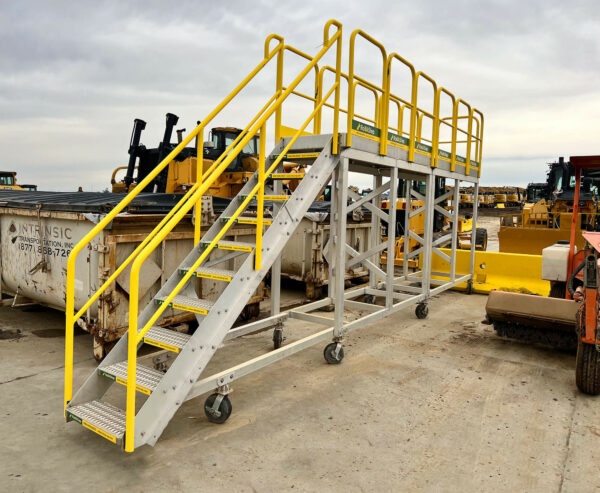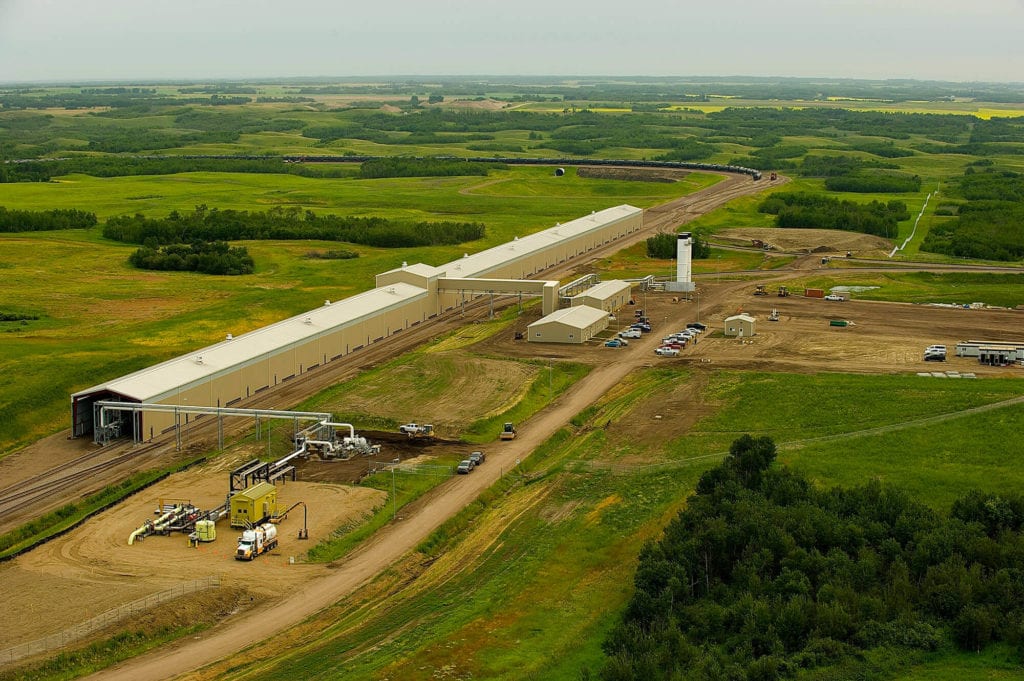Get a quote, configure a custom safety solution or ask a question. We're here to help!








- Spill ContainmentMore …Loading Safety CagesMore …
SafeRack Worldwide
We pride ourselves on one-on-one customer service. When you call SafeRack, we'll be there to answer your questions with a combined experience of 400+ years.
Select your region below.- View Products
- Railcar & Truck Loading Platforms
- Gangways & Loading Ramps
- Stairs, Platforms & Ladders
- Mobile Ladders & Platforms
- Loading Arms & Fluid Transfer
- Safety Gates & Traffic Control
- Aviation & Aerospace Access
- Marine Access & Loading
- Grounding & Monitoring
- Spill Containment
- Loading Safety Cages
- Transloaders & Skids
- Shelters & Canopies
- Fall Protection
- Terminal & Speciality
Home / Industries / Bulk Chemical Loading / Hydrochloric Acid Handling Design, Loading, and Installation.Hydrochloric Acid (HCl) Handling Design, Loading, and Installation
Although no two HCl Loading solutions will be identical, the product itself determines much of the critical design criteria that will ensure that optimum safety and productivity can work together in harmony.
What is Hydrochloric Acid? Hydrochloric Acid also known as muriatic acid, is an aqueous solution of hydrogen chloride. It is a colorless solution with a distinctively pungent smell.
In the United States, HCl is typically a “tight-fill” (closed-loop) loading operation and is loaded into trucks or rail cars via chemical hoses or by-pass arms. HCl, if not handled properly can be fatal and Personal Protective Equipment (PPE) is required. Additionally, because operators are on top of the vehicles during the loading process, fall prevention is essential, not only for safety but increases throughput. HCl is typically transported in 20,800-gallon non-insulated rubber lined tank cars. Rail cars have a typical overall length of ~44′, with 6’x6′ centered or off-set crash boxes. When transporting HCl over the road, smaller barrel (diameter) acid trailers are typically used. Since acid is heavier than water these trailers often carry the same weight as a comparable tank truck.
























Question, Get a Quote, Live Demo or Request an On-Site Visit
Our experts simplify the complex
View Full TextYour Project
Typically, as a starting point, we will need to know answers to these questions for your project
- The Railcar connection locations need flexibility – Do you know what the breadbasket connections look like?
- Are you using liquid and vapor arms/hose as two separate devices or a piggyback arm?
- Is the loading station indoors or outdoors?
- Is the loading area temperature controlled?
- How are you going to spot your railcars
Our highly trained technical sales team will undertake a detailed site survey prior to undertaking any work to check and clarify all dimensions, obstructions, access issues and other salient points. Our challenge is to provide the safest working environment – protecting operators and the equipment – while simultaneously enabling you to improve throughput and productivity.
Your Project Needs
Whether you are looking for a turn-key installation, on-site supervision or a maintenance program, SafeRack is positioned to assist you. We can do as little or as much as you need. Our project management and supervision team is the best in the business at supporting your company’s needs.
- Collaborative Design – Our loading platform specialists will work with you one on one, if you design to design the best loading solution for your specific needs
- Contract review – drawings and associated documents relating to the contract prior to site arrival
- Risk Assessment – Undertaking a site risk assessment
- Shipment Inspection – Detection of any shipping damage or abnormalities
- Material Receiving – Supervised off-loading and transport at site
- Installation Management – Supervised Installations and Coordination
- Start-up & Commissioning – On-site training for both users and maintenance personnel
Loading Arms
Generally speaking, SafeRack recommends rigid pipe loading arms where possible for the following reasons:
- Balanced throughout their movement envelope
- Designed not to hit the ground – protecting the asset and the operator
- Ergonomic – one man operation
- Fitted with manual or actuated valves.
- Fitted with optional purge/vent facilities
- Can be moved into position with ease and left hanging in the air while the operator prepares the tanker connection
- Parked neatly
Hoses require:
- Annual pressure test
- Are difficult to stow neatly when not in use
- Can be dropped
- Can be driven over
- Are very heavy to use if fitted with a valve at the tanker connection point
- Cannot be easily heated or have vent/purge valves fitted to it
- Prone to catastrophic failure
Typical Hydrochloric Acid Loading Platform
Quote or discuss your installation.
Start by selecting loading application"*" indicates required fields
Below are some of the loading and unloading solutions for illustrative purposes only. Our experts will work with you and your team for a custom solution to suit your needs.
Hydrochloric Acid Loading Arms

HCl is typically loaded into railcars via chemical hoses or by-pass arms. The current best loading practice is to use a 3″ PTFE lined chemical hose, with quick-acting coupling, often in the form of Hammer Unions with stabber pipe. The PTFE lined hose will have a top inlet with a control valve to ensure that it is self-draining after use and is supported along the length of a mechanical loading arm to improve handling; this is known as a by-pass arm. You can install one liquid and one vapor arm, or mount both the liquid and vapor hoses on one by-pass arm.
In addition to PTFE, Rubber, Ethylene-propylene and Viton are common gasket or seal materials for HCl applications.
Break-away couplings can be fitted near the inlet of the hose for additional safety in the event of a drive-off
Although some sites use PTFE lined loading arms, our experience has been that these can be cost-prohibitive to maintain and challenging to keep a leak-tight seal across each arm section.
Hydrochloric Acid Loading Gangways and Safety Cages

A wider access gangway (36″-48″ is preferable) as it helps improve access and egress to and from the vessel. In addition, a wider gangway will reduce the risk of the operator’s PPE getting caught, torn or damaged, and will improve productivity and safety. Powered gangway solutions are also an option, with both hydraulic and pneumatic solutions being commonly used. Each gangway will be fitted with a two-rail safety cage for the railcar crash box. This will be a centered 6’x6’ safety cage to sit directly over the cashbox. This will provide a safe, secure work environment for your operator when connected to their breathing apparatus

SafeRack’s GX SAS gangways use Retractalok power-assist technology allowing operators to raise or lower effortlessly, light as a feather to lift, and solid as a rock. Tested in the most critical applications, this revolutionary new gangway outperforms all others. Available in multiple lengths and widths.
Learn MoreMAXRack Elevating Safety Cage
 As an alternative to our two and four-rail safety cages, some customers prefer our MAXRack elevating safety cages. The ultimate fall prevention solution engineered to keep operators safe and productive. Designed for both trucks or railcars, and available in multiple cage lengths and widths. Safe, durable, and easy to use. MAXRack is built rock-solid with galvanized steel column supports and lifting arms (cages can be Aluminum, Galvanized, or Stainless Steel depending on application) Available in two power options – Pneumatic Air Drive and Electric Drive (Explosion and Non-Explosion Proof).
As an alternative to our two and four-rail safety cages, some customers prefer our MAXRack elevating safety cages. The ultimate fall prevention solution engineered to keep operators safe and productive. Designed for both trucks or railcars, and available in multiple cage lengths and widths. Safe, durable, and easy to use. MAXRack is built rock-solid with galvanized steel column supports and lifting arms (cages can be Aluminum, Galvanized, or Stainless Steel depending on application) Available in two power options – Pneumatic Air Drive and Electric Drive (Explosion and Non-Explosion Proof).
Learn MoreHydrochloric Acid Eye Wash/Drench Showers

ANSI guidelines state that an Eye Wash/Drench Showers need to be located 10 seconds or 55’ (16.8m) from contaminants or hazardous materials. Eyewash stations need to be on the same horizontal plane with no obstructions.
Therefore, we would propose the installation of a standard combination Drench Shower/Eyewash Unit, which will save limited space and fit easily into any work environment.
Hydrochloric Acid Spill Containment

Spill containment pans will be provided at the point of loading operations and is an essential piece of equipment in overall site safety and environmental protection. Since HCl is highly corrosive and will attach most common metals SafeRack recommends either a polyethylene or composite track pan. Grounding for Hydrochloric Acid Loading

HCl is highly reactive and will attac most common metals, and in the process will release hydrogen. If allowed to concentrate, the hydrogen can create a flammable mixture that could lead to a fire or explosion. Therefore, industry best practice includes the grounding of all vessels before starting the (un)loading process. - Vehicle grounding and bonding — ensure true grounding before product flow is permitted
- Explosion-proof enclosures — meet or exceed UL, CSA, and Ex requirements
Safety Gates for Hydrochloric Acid Application

Safety Gates will be installed at the top of stairs and any other openings to ensure operator safety at all times.  YellowGate Safety Gates
YellowGate Safety GatesSafeRack’s line of industrial safety gates is the most flexible product on the market with the ability span openings between 16” and 36” and is field adjustable with nothing more than a wrench. Learn More
Hydrochloric Acid Loading Options

- Lighting – Lighting both over and under the platform will be provided. For overcast days or second shift, lighting is essential for improved safety and improved productivity.
- Platform & Canopies – Full platform canopies reduce exposure to the elements and improve the safe and productive loading operation from the operator’s perspective.
- Operator Shelter – Depending on your site requirements, consideration should be given to the requirement of an operator or guard building on the loading platform. This can be customized to meet specific site requirements.
- Wheel Chocks – Railcar Wheel Chocks provide fast blocking of all types of railcars and meet OSHA regulations to safely prevent railroad cars from moving during loading or unloading operations. This is a requirement by the Department of Homeland Security.
Personal Protective Equipment PPE Requirements
Eye/Face Protection: Wear chemical safety goggles. A face shield (with safety goggles) may also be necessary.
Skin Protection: Wear chemical protective clothing e.g. gloves, aprons, boots. Coveralls or long sleeve shirts and pants in some operations. Wear a chemical protective, full-body encapsulating suit, and self-contained breathing apparatus (SCBA). Suitable materials include: butyl rubber, neoprene rubber, Viton®, Viton®/butyl rubber, Barrier® – PE/PA/PE, Silver Shield® – PE/EVAL/PE, Trellchem® HPS, Trellchem® VPS, Saranex®™, Tychem® BR/LV, Tychem® Responder® CSM, Tychem® TK.
Respiratory Protection: Up to 5 ppm
* For illustrative purposes only. Our experts will work with you and your team for a custom solution to suit your needs Customer Reviews
 5 5SafeRack came to our facility not only to measure, but also took the time to discuss the operation of the product.
5 5SafeRack came to our facility not only to measure, but also took the time to discuss the operation of the product.SafeRack came to our facility not only to measure, but also took the time to discuss the operation of the product. Our sales rep, John Edwards, was very responsive.
By Lance Barrow from Brenntag on 5/17/12 4 5Overall very good experience with your company.
4 5Overall very good experience with your company.Your customer service people are very good at helping your customers. Linda Hardee was very helpful with finding the right springs and getting them to me very quickly so we could get back in operation. She always stayed in constant contact with me every step along the way. Overall very good experience with your company.
By Jeff Loveless from Genon Energy Inc. on 1/9/12 5 5No obstacles, smooth transaction.
5 5No obstacles, smooth transaction.No obstacles, smooth transaction. The team got me a quote quickly and shipped the items promptly.
By Jerry Puranen from Cheoy Lee Shipyards North America, Inc on 2/25/16 4 5All of my questions were answered clearly.
4 5All of my questions were answered clearly.The product works well, easy to maintain and easy to repair. Scott Hite was helpful – all of my questions were answered clearly and helped me understand what I was looking for.
By Dan Hadzima from Purac America on 7/19/11 5 5Ease of mobility. Safety. Multiple heights.
5 5Ease of mobility. Safety. Multiple heights.Just used it today for the first time. Easy to use and set up. Makes getting to the top of tank wagons and iso-containers much easier.
By Mark Hinze from King Industries, Inc. on 8/10/17 5 5My product was delivered faster than expected.
5 5My product was delivered faster than expected.They were excellent. There was great follow through with all questions and billing issues. I even got a email just saying that Katie was still waiting to hear back from a vendor. Katie Kelly did a AWESOME job!!
One of the biggest selling points for me was the weight of the spill containment that I purchased. It was durable but light enough to easily be moved. I would definitely recommend this product as it fits the description 100%. It is very well built and will provide years of service to our company. All of my experience with the company was above standards and expectations. Everyone was fast to respond and very nice and respectful. The product was more than I expected and the price was very competitive.
By Erik Purvis from Remote Area Medical on 5/7/18MAJOR HCI PRODUCERS WHERE WE HAVE SUCCESSFULLY EXECUTED HCI LOADING PROJECTS

Hydrochloric Acid 101
Things to know about Hydrochloric Acid

Chemical formula: HCl
Appearance: Clear and slightly yellow liquid
Physical State: Liquid
Hydrochloric acid is a strong corrosive acid that’s formed by dissolving hydrogen chloride in water. Also referred to as Hydrogen chloride and Muriatic acid. HCI has many uses and it is used in the production of chlorides, fertilizers, dyes, textiles, rubber, and pharma. HCI is an inorganic liquid that’s clear to slightly yellowish in color and reacts negatively with strong alkalis. HCI is typically shipped at a strength of 32 to 36%, with the balance being water.
Concentrated forms of HCI release acidic mists that are also dangerous; seek immediate medical assistance if exposed. SafeRack further recommends adding a fan to the platform to help dissipate fumes or mist.
OSHA Permissible Exposure Limit (PEL) @ .05 parts per million. At 50 parts per million
it’s considered “Immediately Dangerous to Life and Health”.
Is your plant or facility compliant with ANSI, OSHA, and local safety codes? We can help!


EMERGENCY EYEWASHES / SHOWER EQUIPMENT AND THE ANSI/ISEA Z358.1 – 2014 STANDARD
Following eye contact, you must start washing with water immediately to prevent permanent damage. In the event of skin contact, you must start washing with water immediately to prevent slow-healing chemical burns.
Are you aware that ANSI guidelines state that Eye Wash/Drench Showers need to be located 10 seconds or 55′ from contaminates or hazardous materials and located on the same horizontal plane, with no obstructions? If bottom loading/unloading, an additional shower should be located at grade as well. SafeRack provides the above equipment plus much more needed to keep employees safe and expedite bulk chemical loading and unloading.
OSHA Regulation Experts – Does your existing chemical safety equipment or chemical loading systems meet OSHA’s latest requirements? SafeRack’s professional technical sales consultants are available to meet with your team to make recommendations to keep your facility in front of OSHA’s ever-changing country and region-specific standards and regulations, including lifeline and trolley beam fall arrest systems, metal stairs, and access platforms.
Why SafeRack?
The SafeRack approach is a collaborative one. Let’s call it The SafeRack Way. We have, over many years amassed a great deal of experience and understanding of the safety aspects involved in loading road tankers and railcars, as well as the behavioral habits of the operators.

Experts In Chemical Loading
- Acetic Acid
- Acetic Anhydride
- Acetonitrile
- Acrolein
- Acrylic Acid
- Acrylonitrile
- Aluminum Chloride
- Aluminum Sulfate
- Ammonia
- Ammonium Hydroxide
- Ammonium Nitrate
- Aniline
- Benzene
- Benzyl Chloride
- Bromotrifluoromethane
- Butadiene
- Carbon Dioxide
- Caustic
- Chlorine
- Chloroform
- Chlorosulfonic Acid
- DEF (Diesel Exhaust Fluid)
- Diethylene Glycol
- Dimethylformamide
- Dodecylbenzene Sulfonic Acid
- Ethanol
- Ethyl Acetate
- Ethyl Chloride
- Ethylene
- Ethylene Dichloride
- Ethylene Glycol
- Ethylene Oxide
- Ferric Chloride
- Ferrous Chloride
- Hexane
- Hydrochloric Acid
- Hydrofluoric Acid
- Hydrofluorosilicic Acid
- Hydrogen Cyanide
- Hydrogen Peroxide
- Hydrofluoric Acid
- Hypochlorous Acid
- Isopropyl Acetate
- Liquid Argon
- Liquid Nitrogen
- Liquid Oxygen
- Maleic Anhydride
- MDI
- Methanol
- Methyl Chloride
- Methyl Ethyl Ketone
- Methyl Methacrylate
- Methyl Isocyanate
- Molten Sulphur
- Nitric Acid
- Oleum
- Phenol
- Phosphoric Acid
- Phosphorus Oxychloride
- Phosphorus Trichloride
- Polypropylene
- Renewable Diesel
- Sodium Cyanide
- Sodium Hydroxide
- Sodium Hypochlorite
- Styrene Monomer
- Sulfuric Acid
- Sulfur Dioxide
- Titanium Tetrachloride
- Toluene
- Toluene Diisocyanate
- Turpenitne
- UAN (Urea Ammonium Nitrate)
- UREA
- Vinyl Acetate
- Vinyl Chloride
- Xylene
- Zinc Chloride
- Agro-Chemical
- Specialty Chemical
- Petrochemical

North America’s largest loading terminal
World-leading designer, manufacturer, and installer of truck and railcar loading platforms
As one of the primary railcar loading points, Hardisty is one of the major crude oil hubs in North America and a major origination point of pipelines that export to the United States. SCS was asked to supply and construct a SafeRack crude oil loadout terminal spanning nearly half a mile. The USD Hardisty terminal can load up to two 120-railcar unit trains per day and consists of a fixed loading rack with 62 railcar loading positions enclosed, separate control, operator, and mechanical buildings, as well as a unit train staging area and loop tracks capable of holding multiple unit trains simultaneously. SCS also supplied and installed boom-supported loading arms with supply and vapor management systems.

Quick Quote 866-761-7225
LET US DESIGN YOUR SOLUTION TODAY
Our innovative tools provide 3D visualizations and accurate quotes in minutes.
Get Help NowOrder Now 866-761-7225
Questions or Need a Quote?
Chat live with a knowledgeable and friendly safety expert now.

Bob Kashtan
Located in South Carolina

Joey Robinson
Located in South Carolina

Caelin Lacy
Located in South Carolina

Katie Kelly
Located in South Carolina

Amber Graham
Located in South Carolina













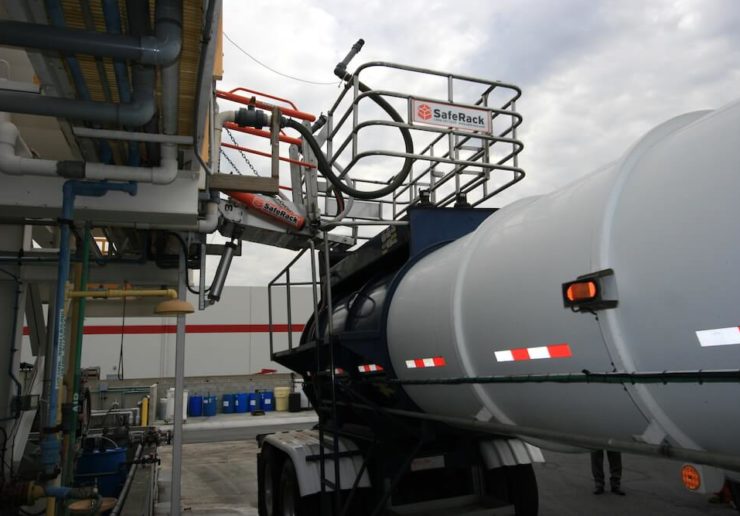


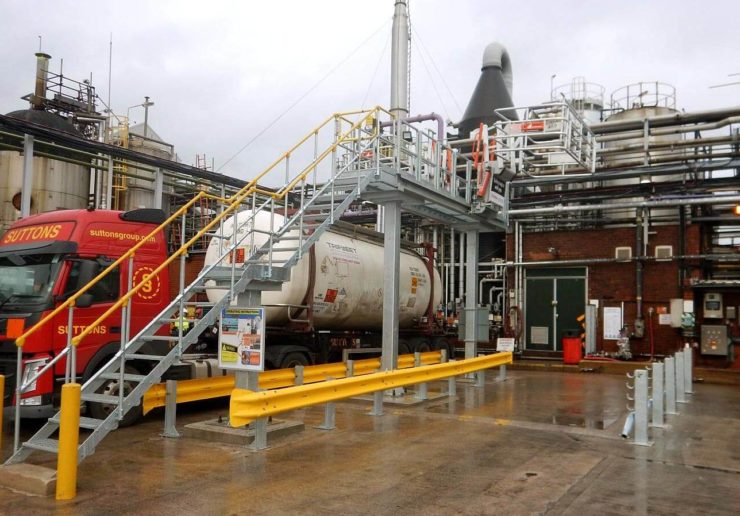
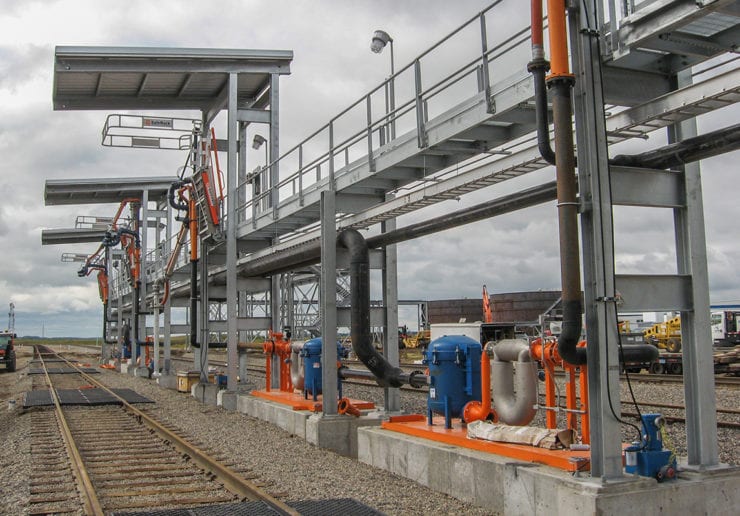

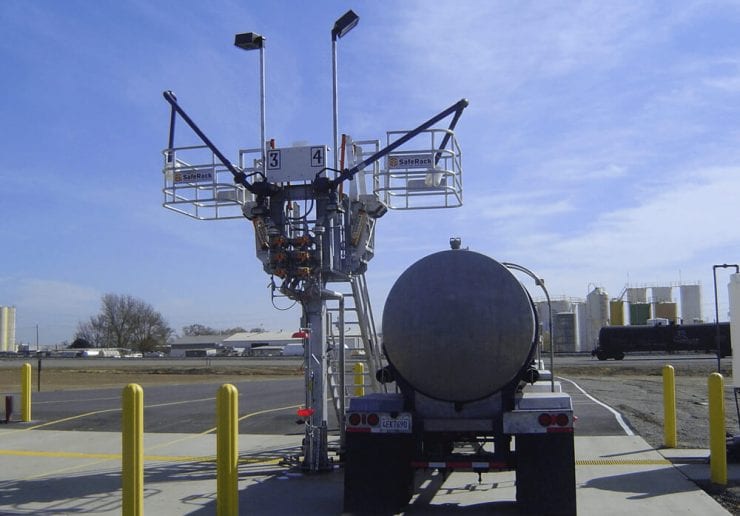




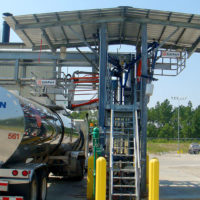
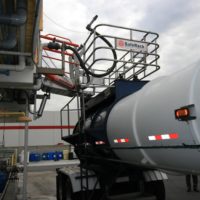


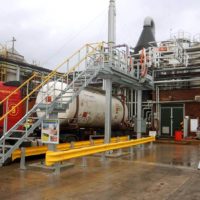
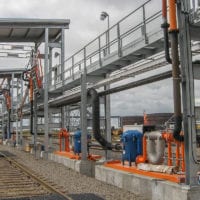

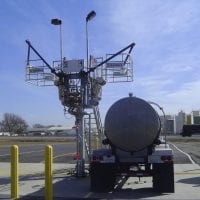





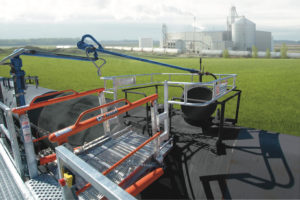
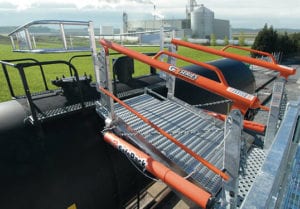
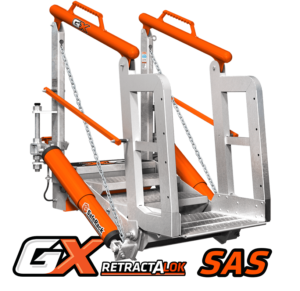
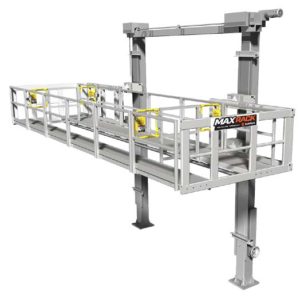 As an alternative to our two and four-rail safety cages, some customers prefer our MAXRack elevating safety cages. The ultimate fall prevention solution engineered to keep operators safe and productive. Designed for both trucks or railcars, and available in multiple cage lengths and widths. Safe, durable, and easy to use. MAXRack is built rock-solid with galvanized steel column supports and lifting arms (cages can be Aluminum, Galvanized, or Stainless Steel depending on application) Available in two power options – Pneumatic Air Drive and Electric Drive (Explosion and Non-Explosion Proof).
As an alternative to our two and four-rail safety cages, some customers prefer our MAXRack elevating safety cages. The ultimate fall prevention solution engineered to keep operators safe and productive. Designed for both trucks or railcars, and available in multiple cage lengths and widths. Safe, durable, and easy to use. MAXRack is built rock-solid with galvanized steel column supports and lifting arms (cages can be Aluminum, Galvanized, or Stainless Steel depending on application) Available in two power options – Pneumatic Air Drive and Electric Drive (Explosion and Non-Explosion Proof).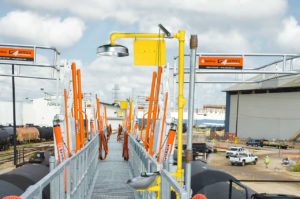
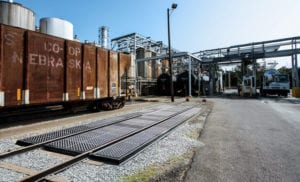
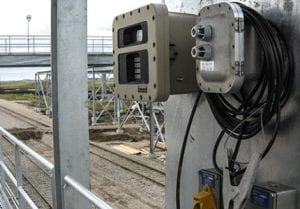
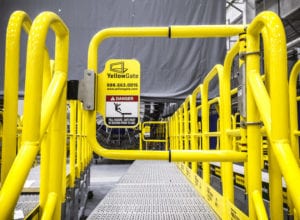
 YellowGate Safety Gates
YellowGate Safety Gates